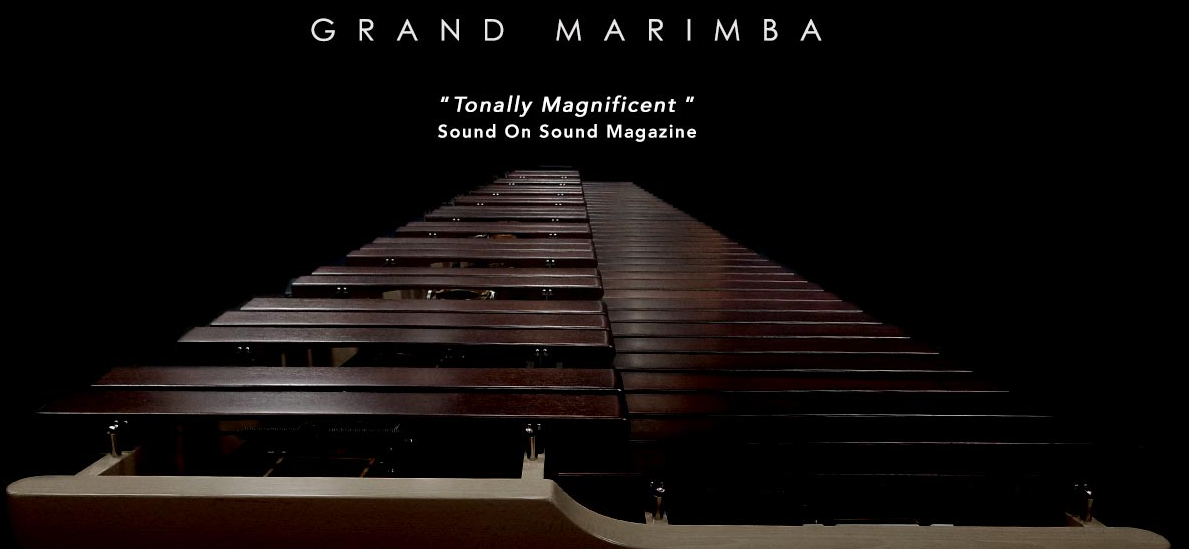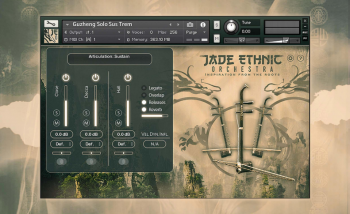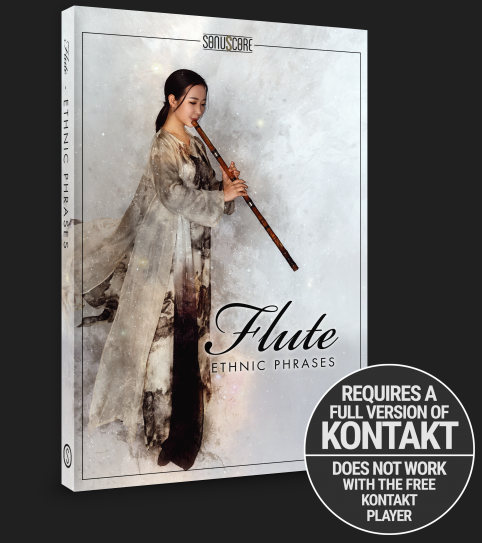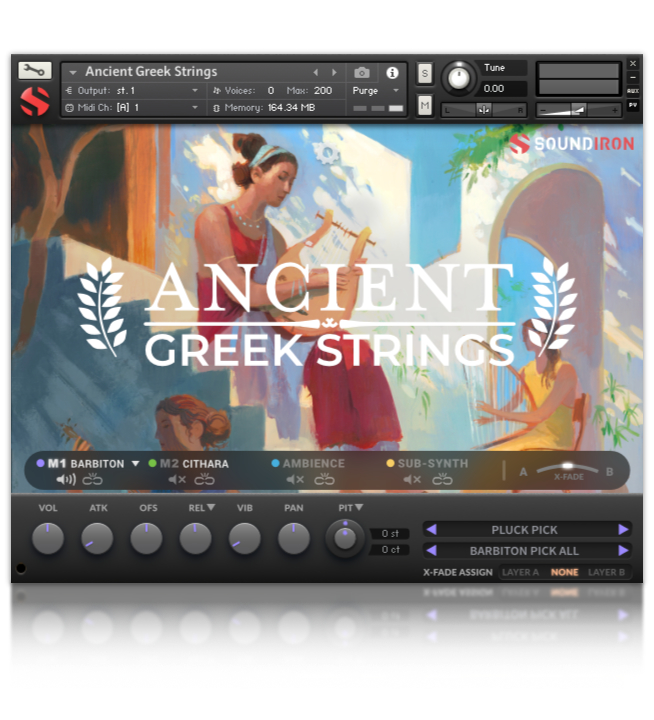世界一流的表演者石谷正代(Masayo Ishigure)发行的最深的古筝,低音古筝和三味琴音乐库! 2个麦克风位置,广泛的动态和RR,FX音色以及广泛的传统和现代发音。我们创建Koto Nation的愿望是希望看到传统的日本乐器得到深入,彻底的采样处理,就像我们广受赞誉的北印度样本库Sitar Nation一样。虽然有一些库包含古筝和三味线的样本,但它们仅具有最基本的清晰度,并且速度(或有的话)或轮循的次数很少。据我们所知,低音古筝从未被采样过!考虑到尺八和太鼓在许多西方电影原声带中的流行,我们希望允许电影作曲家,业余制作人,民族音乐学家,动漫迷以及所有介于两者之间的人使用这些经典乐器,并完善传统的日本声音。 该库包含大量样本,涵盖了各种传统演奏方法和扩展演奏方法,所有这些都由古筝传奇人物石谷正代(Masayo Ishigure)(艺ish回忆录)录制。这包括近距离和立体声室麦克风位置!三种乐器中共有25个主要音色,涵盖了所有关键的演奏技巧,例如:用拨子,披萨琴,八度音阶,多种类型和速度的滑音,持续音,颤音,颤音,音(弯音)和静音等持续演奏。以及扩展技术,例如无声滑音,手指刮擦,击弦和硬弹。 记录每个关节的多个动态层和循环层,并在适当时记录速度或音调的变化;例如,古筝颤音可以以两种主要速度播放(具有精细的速度控制),声可以设置为全音或半音,滑音可以缓慢,快速地以升序,降序或混合顺序播放,并且以此类推。这种令人难以置信的采样深度可实现无与伦比的真实感,使乐器既可以单独演奏也可以单独演奏。 The deepest koto, bass koto and shamisen library ever released, featuring world-class performer Masayo Ishigure! 2 mic positions, extensive dynamics and RRs, FX patches and extensive traditional and contemporary articulations. We created Koto Nation out of a desire to see traditional Japanese instruments receive a deep, thorough sampling treatment, much like our acclaimed North Indian sample library Sitar Nation. While there are a handful of libraries which include samples of the koto and shamisen, they feature only the most basic articulations and few (if any) velocities or round robins. To our knowledge, the bass koto has never been sampled at all! Given the popularity of the shakuhachi and taiko in many Western film soundtracks, we wanted to allow film composers, hobbyist producers, ethnomusicologists, anime fans and everyone in between access to these classic instruments and complete the repertoire of traditional Japanese sounds available. This library includes a massive number of samples spanning a wide variety of both traditional and extended playing techniques all recorded by koto legend Masayo Ishigure (Memoirs of a Geisha). This includes close and stereo room mic positions! A total of 25 main patches spread among the three instruments cover all crucial playing techniques, such as sustained picks with a plectrum, pizzicato, octaves, glissandi of multiple types and speeds, vibrato, tremolo, mordents (pitch bends), and mutes, as well as extended techniques such as atonal glissandi, finger scrapes, string hits and hard plucks. Multiple dynamic and round robin layers were recorded for each articulation, as well as variations in speed or tonality where appropriate; for example, the koto tremolo can be played at two main speeds (with fine speed control), mordents can be set to whole-tone or half-tone, glissandi can be played slow, fast and in ascending, descending or mixed order, and so on. This incredible depth of sampling allows for unparalleled realism, allowing the instruments to stand alone in a solo context as well as in a larger composition. |
 古筝 SonicCouture GuZheng v2.0.0 KONTAKT
古筝 SonicCouture GuZheng v2.0.0 KONTAKT 现代马林巴 Soniccouture Grand Marimba v2
现代马林巴 Soniccouture Grand Marimba v2 笛子 Evolution Series World Colors Dizi
笛子 Evolution Series World Colors Dizi  古筝 Evolution Series World Strings Guzh
古筝 Evolution Series World Strings Guzh 马头琴与呼麦 Evolution Series Chronicles
马头琴与呼麦 Evolution Series Chronicles 琵琶 Evolution Series World Colors Pipa
琵琶 Evolution Series World Colors Pipa  翡翠民族管弦乐团 Strezov Sampling JADE E
翡翠民族管弦乐团 Strezov Sampling JADE E 中国萧 Aria Sounds Xiao Flute KONTAKT
中国萧 Aria Sounds Xiao Flute KONTAKT 笛子短语 SonuScore Ethnic Flute Phrases
笛子短语 SonuScore Ethnic Flute Phrases  古希腊弦乐 Soundiron Ancient Greek Strin
古希腊弦乐 Soundiron Ancient Greek Strin 日本筝、三味线、尺八、女声音色库 Evoluti
日本筝、三味线、尺八、女声音色库 Evoluti 古筝 Evolution Series World Strings Guzh
古筝 Evolution Series World Strings Guzh